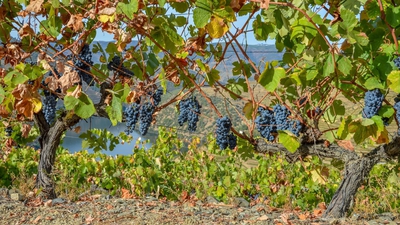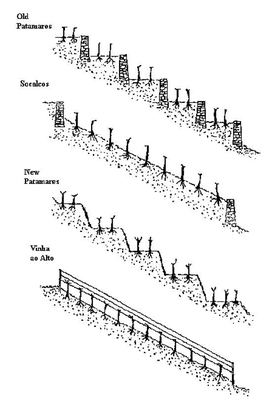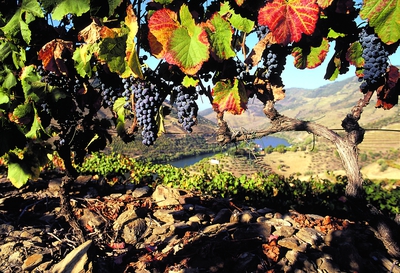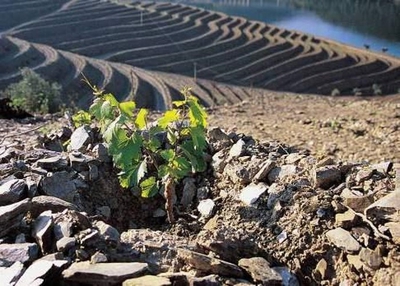 |
Soils Douro soils are typically quite acidic, often producing nutrient deficiencies. The soils are generally shallow and very rocky, consisting of a layer of light clay-schist spread thinly over the underlying schistose rock. Relatively soft and gradually eroded into a silt-like dust, the rock is found throughout the soil profile. The stone in the soil has two main beneficial effects. During the winter it increases water penetration and stabilizes the soil against erosion which is especially important where the terraces are cut by bulldozer and therefore have no supporting wall. In the summer the heat-retention of the stones keeps the root zone warm during the night and extends the useful hours of ripening each day. This ensures complete fruit ripeness virtually every year. Farther east and upriver, granite and the classic blue schist can be found. As a general rule the darker the schist, the harder it is. |
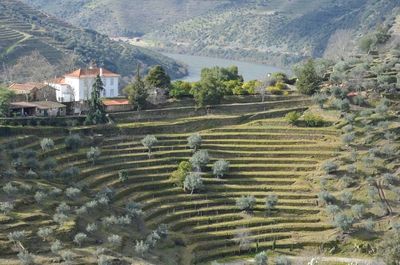 |
Terroir The Douro Valley is a beautiful and challenging wine-producing region. The terroir consists of steep terraced slopes, dry schist soils, cold winters, hot & dry summers. The vines produce small bunches with fantastic concentration, structure, color and quality. With low yields and challenging terrain, the cost of growing grapes in the Douro is significantly higher than most other wine-producing regions. |
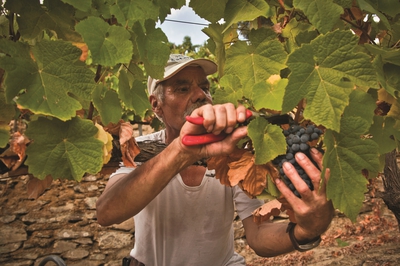 |
Harvest The viticultural year begins at budburst around the middle of March. This usually signifies the end of the harsh winter weather when delicate young shoots are at risk to damage from late frosts, mildew, etc. By the middle of May the shoots have reached around three feet in length and flowering starts. The whole flowering process, from the first cap fall to fruit set, can take as little as a week or as much as a month depending on the weather. Low light levels, high winds and rain during this period are particularly problematic, resulting in major effects on vine yield. Root growth also peaks at about this time. Around July veraison, the start of the ripening, can be expected. In September the grapes are usually ripe enough to pick with high sugar levels having been achieved by a combination of good ripening and the concentration effect of mild dehydration. Due to the challenging terrain, all the fruit is picked by hand. |
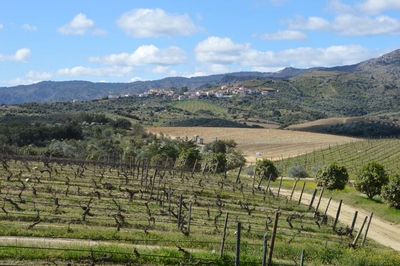 |
Climate The climate in the Douro is characterized by variation. Annual temperatures fluctuate between extremes. Winter temperatures often fall below freezing and yet it regularly climbs above 104ºF at the height of summer. These variations are more pronounced the further east you go. The dominant weather patterns arrive from the Atlantic in the west and are forced up over the Serra do Marão Hills. Rainfall is therefore largely dictated by altitude and proximity to the hills with the effect that annual rainfall, concentrated mainly in November, December, and January, shows remarkable differences across very small distances. On the higher land it can be as high as 48 inches and, as a general rule, rainfall decreases further inland. This corresponds to around 36 inches at Régua, through 24 inches at Pinhão, and down to as low as 12 inches by the Spanish border. The practical effects of this are that the hotter, drier regions further to the east tend to produce smaller volumes of riper, richer and more concentrated wines. |
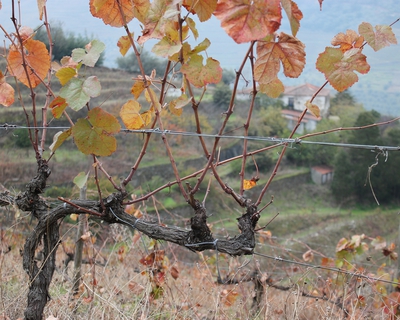 |
Planting & Training Grapevines require physical support, known as a trellis. This consists of a line of posts placed roughly every fifteen feet and joined by a series of wires. Traditionally the trellising posts were split from the very hard blue schist prevalent in the eastern reaches of the Douro, around Foz Côa, but nowadays wooden or metal posts are normally preferred as they are more resilient. The widespread use of cover cropping helps us to conserve moisture, combat erosion, control pests, protect biodiversity, build organic matter in the soil and capture carbon. They are also at the forefront of modern viticulture – constantly aiming to increase quality, maximize efficiency, and pioneer low-impact, environmentally responsible farming. |
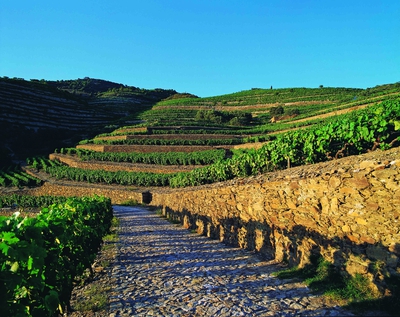 |
Vineyards In terms of vineyard layout, planting in the Douro poses a multitude of problems associated with the very steep and rocky terrain. Over the centuries they have come up with varied planting technique advancements; Traditional Patamares (stone terraces), Socalcos (broader stone terraces), New Patamares (steeply inclined banks), and Vinha ao alto (vertical rows). |
